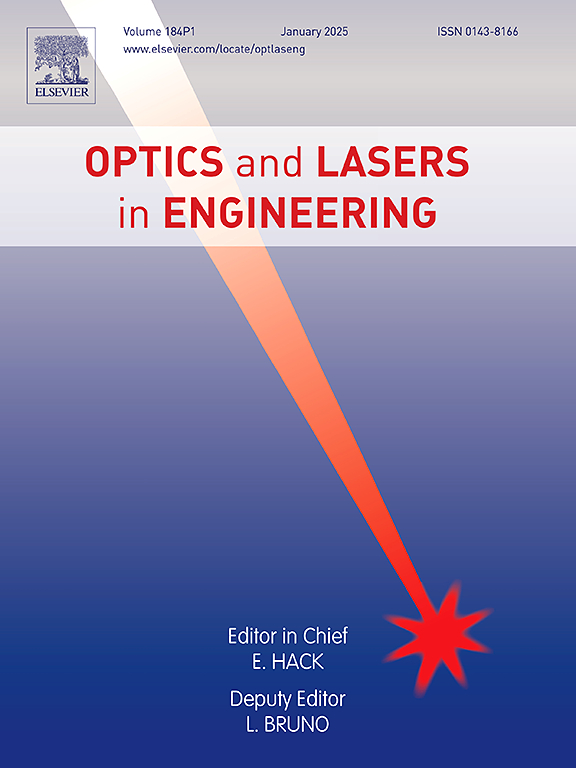Accurate channel-resolved spectral characterization of LED arrays based on phase-sensitive detection
IF 3.5
2区 工程技术
Q2 OPTICS
引用次数: 0
Abstract
With the increasing integration of multi-wavelength chips and intelligent control technologies, light-emitting diode (LED) arrays have become widely adopted in advanced lighting and display systems. However, accurately characterizing the spectral contribution of individual LEDs under actual operating conditions remains a significant challenge due to photothermal coupling, and the limitations of conventional measurement approaches that rely on single-channel activation or physical masking. In this study, we present a spectral measurement method for LED arrays based on phase-sensitive detection, in which unique modulation signals are assigned to each LED and lock-in amplification is used to extract channel-resolved spectra while all LEDs are operating simultaneously. This enables spectral decomposition under real operating conditions and supports the construction of a nonlinear spectral synthesis model that accounts for photothermal interactions. The model achieves a spectral optical power prediction error below 1.2 %. Furthermore, by incorporating Grassmann’s color matching law and constraining the Standard Deviation of Color Matching (SDCM), optimal duty cycles can be determined to ensure chromatic stability. As a representative application, we demonstrate several lighting scenes—relaxation, working, and low-blue-light—using an RGBW LED module, achieving a wide correlated color temperature range (2500–6500 K), adjustable luminous flux (20–140 lm), high color rendering index (CRI), and low blue light hazard energy (BLHE). This work offers a robust system for spectral measurement, modeling, and precise control of LED arrays, with broad applicability in intelligent lighting and spectral calibration systems.
基于相敏检测的LED阵列精确通道分辨光谱表征
随着多波长芯片集成度和智能控制技术的不断提高,发光二极管阵列在先进的照明和显示系统中得到了广泛的应用。然而,由于光热耦合以及依赖于单通道激活或物理掩蔽的传统测量方法的局限性,在实际工作条件下准确表征单个led的光谱贡献仍然是一个重大挑战。在本研究中,我们提出了一种基于相敏检测的LED阵列光谱测量方法,该方法在所有LED同时工作的情况下,为每个LED分配唯一的调制信号,并使用锁定放大来提取通道分辨光谱。这使光谱分解能够在实际操作条件下进行,并支持构建考虑光热相互作用的非线性光谱合成模型。该模型的光谱光功率预测误差小于1.2%。此外,通过结合Grassmann的配色定律和对配色标准偏差(SDCM)的约束,可以确定最优占空比以保证颜色的稳定性。作为代表性应用,我们展示了几种照明场景-放松,工作和低蓝光-使用RGBW LED模块,实现了宽相关色温范围(2500-6500 K),可调光通量(20-140 lm),高显色指数(CRI)和低蓝光危害能量(BLHE)。这项工作为LED阵列的光谱测量、建模和精确控制提供了一个强大的系统,在智能照明和光谱校准系统中具有广泛的适用性。
本文章由计算机程序翻译,如有差异,请以英文原文为准。
求助全文
约1分钟内获得全文
求助全文
来源期刊

Optics and Lasers in Engineering
工程技术-光学
CiteScore
8.90
自引率
8.70%
发文量
384
审稿时长
42 days
期刊介绍:
Optics and Lasers in Engineering aims at providing an international forum for the interchange of information on the development of optical techniques and laser technology in engineering. Emphasis is placed on contributions targeted at the practical use of methods and devices, the development and enhancement of solutions and new theoretical concepts for experimental methods.
Optics and Lasers in Engineering reflects the main areas in which optical methods are being used and developed for an engineering environment. Manuscripts should offer clear evidence of novelty and significance. Papers focusing on parameter optimization or computational issues are not suitable. Similarly, papers focussed on an application rather than the optical method fall outside the journal''s scope. The scope of the journal is defined to include the following:
-Optical Metrology-
Optical Methods for 3D visualization and virtual engineering-
Optical Techniques for Microsystems-
Imaging, Microscopy and Adaptive Optics-
Computational Imaging-
Laser methods in manufacturing-
Integrated optical and photonic sensors-
Optics and Photonics in Life Science-
Hyperspectral and spectroscopic methods-
Infrared and Terahertz techniques
 求助内容:
求助内容: 应助结果提醒方式:
应助结果提醒方式:


